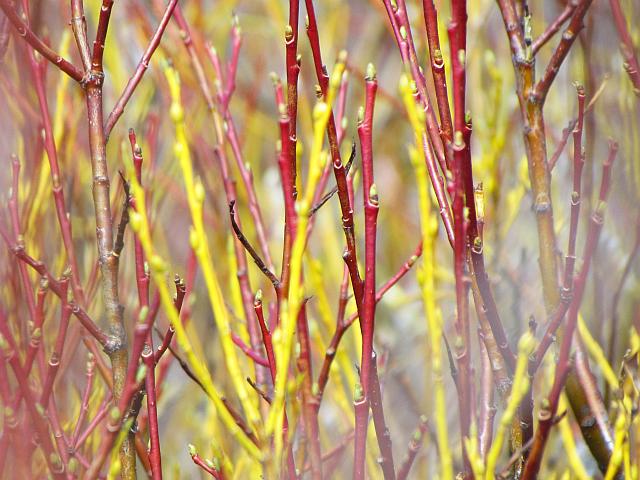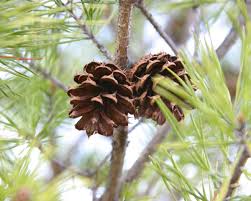 |
| Coral Bells in different shades |
When the weather starts to change from the blue sky's of September to different shades of grey you know that Winter is approaching quickly. It's a fine time to toss tired Summer annuals and refresh existing planters with textural Winter greens. I've been perking up planters around the clubhouse...one pot at a time. Plus, upcycling a few of the Summer's hanging baskets near the kiosk. Fresh seasonal perennials were planted into the center of the Summer baskets while sprigs of cedar boughs were pierced into the moss liners for quick Winter hanging baskets. The planters leading through the parking lot have been planted with Spring bulbs and will be left bare until then.
 |
| Heavenly Bamboo |
Generally, people don't associate Winter with gardening, but there are certainly ways to introduce seasonal plant material to your containers and replenish your hanging baskets. This will bring a little cheer to entrance ways and spruce up focal areas. Winter gardening displays are very elegant and reserved, much like the season itself. The main focus is on foliage through colour and texture. The additions of seasonal flowers, berries and treasures from the yard will complete your Winter displays. Browse your local nursery and you will find that there are plenty of evergreen shrubs, ornamental grasses, ferns and hardy perennials to chose from.
The Coral bell (
Heuchera) is an excellent addition to any Winter container. Vibrant marmalade, citrus
Carex oshimensis 'Evergold' or the
Carex comans in bronze form. Tasteful rounded evergreen shrubs like
Skimmia japonica or
Sarcococca can be the backbone to most Wintertime planters. Their glossy green foliage, modest blooms and berries will be sure to appeal during those grey months. Or how about a
Leucothoe or Heavenly Bamboo (
Nandina domestica) shrub for red variegated foliage?
 |
| Skimmia |
Burgundy shades will complement any glossy green counterpart. Sedge grasses create excellent texture and movement to a container. My personal favourites are the the green and gold variegated.
 |
| Leucothoe |
 |
| Carex 'Evergold' |
Of course, Winter blooming heather and Winter pansies create a beautiful pop of colour in any container. From my experience though, pansies don't fully show up to the party with bright big blooms until the Spring bulbs start to burst from the ground, so I tend to opt for more immediate impact. There are so many interesting cultivars of heathers (
Eric carnea) at nurseries these days with bolder coloured blooms and foliage in shades of reds, silvers, and citrus. Take advantage of the most interesting varieties to maximize your Winter interest. Christmas rose (
Helleborus) is a staple in most Winter planters, also one of the priciest. Christmas Rose cultivar varieties are exponentially expanding every year, with a huge range of colours and bloom styles. The Christmas Rose has become quite the collectors item among plant lovers. I understand the hype because these beauties are absolutely spectacular when planted among Pasque flower (
Pulsatilla), daffodil bulbs and ferns in early Spring. Plant one in a Winter planter for floral interest.
 |
| Christmas Rose |
 |
| Winter blooming heather |
Put on some rubber boots and wander through a local park or in your yard to gather and collect--just like the shrewd squirrel. Collect pine cones, nuts and fallen twigs. Character branches aged with lichen will add a lot of visual interest to your basket. Clip evergreen branches and brightly coloured cuttings from dogwood shrubs and any branch rich with berries. These clippings can be strategically added to any container for filler and interest. Moss is such a beautiful addition to a Winter basket as well. Create your own birds nest and fill it with found treasures.


Here are some of my favourite plants for Winter interest;
Berries;
Skimmia,
Cotoneaster,
Sarcococca, Beauty berry (
Callicarpa)
Foliage Interest;
Carex grasses, Heavenly bamboo (
Nandina domestica),
Leucothoe,
Euonymus, Coral bells (
Heuchera), Dwarf Conifers, privet, ferns,
Rhododendron,
Ajuga, Ivy,
Pachysandra
Floral Interest; Heather (
Erica carnea), Christmas Rose (
Helleborus), pansies,





















